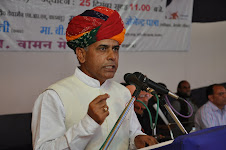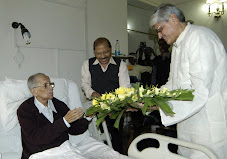From: Habib Yousafzai <habibyousafzai@gmail.com>
Date: Fri, Jul 16, 2010 at 11:40 AM
Subject: [bangla-vision] Rewriting the rules of engagement
Paul Watson Canadian soldiers patrolling for IEDs in Kandahar province, Afghanistan, are finding it easier to take out insurgents due to a shortened 'kill chain'. PANJWAI DISTRICT, AFGHANISTAN—A pair of Canadian helicopters circled low over a vineyard, watching two insurgents try to slip away, waiting for permission to shoot. The chopper crew and soldiers on the ground were confident they had a good kill in their sights, with little risk of harming innocent bystanders if the Griffon's door gunner pulled the trigger. But the crew needed permission from high up the chain of command, an often frustrating hierarchy that soldiers call "the kill chain." For months now, Canadian and other NATO troops fighting in southern Afghanistan have complained that restrictive rules of engagement, written to win Afghans away from insurgents by limiting civilian casualties, have handed the momentum to the enemy. Not this time. The Griffons had been flying just hundreds of feet above two insurgents for some 20 minutes on the morning of July 5. Soldiers at a nearby outpost, dripping sweat in the scorching morning heat, barely looked up. They're used to nothing coming of it. The insurgents were holed up in a small building the size of a shack, with thick, mud brick walls, where farmers normally dry grapes. When they tried to escape, and commanders had no doubt the men were combatants, their war was over. The grinding noise of a chopper's motorized machine gun, capable of mincing a target with at least 2,000 bullets a minute, echoed across the desert plain. It sounded like a wood chipper dicing up tree limbs. "Oh ya, baby!" one soldier shouted up at the sky as the airborne gatling gun spewed repeated bursts. Whoops and cheers rippled across the dust-blown camp. In a war where the enemy hides in villages, and fights mainly with homemade bombs hidden in cooking pots, water jugs, farmer's fields and trees, it's not often Canadian soldiers get to fight back. Oscar Company was savouring some payback, a sweet taste they've been enjoying more often in recent days. Since Brigadier-General Jon Vance returned to take command in early June, the kill chain has been cut shorter, and Canadian troops on the battlefields of eastern Panjwai district say it's getting easier to take the fight to the insurgents. Major Steve Brown, commander of Oscar Company, in the 1st Battalion of the Royal Canadian Regiment battle group, called Vance "a no-nonsense kind of guy" whose personality has helped reshape battlefield operations. The increased intensity of armed engagements with insurgents also forced change, Brown added. "Part of that is shortening that kill chain," said Brown, 37, of Mansfield, Ontario. "I don't want to say that we are reducing the safeties with respect collateral damage. We're certainly not doing that. You can't compromise on stuff like that. "You've got to protect the population. But it's becoming easier and easier to discern enemy tactics, techniques and procedures with the 'pattern of life' of the locals." Gauging "pattern of life," military jargon for carefully studying the routines and behaviour of Afghans in a potential target area, is meant to make it easier to determine whether innocent bystanders may be in harm's way if troops fire at insurgents. It is a central tenet of the counter-insurgency strategy that Vance helped develop during his first tour here in 2009, and which U.S. General Stanley McChrystal, former commander of U.S. and NATO forces in Afghanistan, later adopted. Its goal is to peel the general population away from the Taliban-led insurgents and build support for President Hamid Karzai's government, which is widely despised for its corruption and incompetence. The men and women risking their lives trying to defeat the insurgents complain their enemies have taken advantage of the restrictive rules of engagement. Living and moving among poor villagers, the insurgents often intimidate or pay ordinary Afghans, including children, to lay booby-trapped bombs and other improvised explosive devices on village paths, in farmer's fields, and more recently, trees. Scandal, not a change of military strategy, brought Vance and the new NATO commander, U.S. General David Petraeus, to the battlefield at a critical turning point in the almost nine-year Afghan war. Vance replaced Brigadier-General Daniel Menard, whom the Canadian forces charged with four counts Monday, including obstruction of justice, stemming from an alleged sexual affair here with Master Corporal Bianka Langlois, a clerk. Petraeus took over from McChrystal, who was forced to quit after he and his staff ridiculed President Barack Obama and key national security aides in front of a Rolling Stone magazine reporter, who wrote an embarrassing profile. The Canadian and U.S. commanders' blunders may prove a boon to troops risking their lives in a conflict that seems a lost cause to many back home. Reports from Washington say Petraeus wants to make the procedures less cumbersome so that troops and commanders can properly weigh the right to self-defence against the risk of hurting innocents, without giving insurgents extra time for an easy escape. In recent days, Canadian forces in eastern Panjwai, one of the toughest battlefields in southern Afghanistan, have chalked up several small victories against an often elusive enemy. A Hellfire missile fired from a Predator drone, operated by Americans but called in by Canadian troops, killed four insurgents laying an IED at a road junction surrounded by vineyards. A direct hit by a 500-pound bomb blasted four insurgents manning an illegal checkpoint. A spotter helping to set up an ambush of a Canadian patrol was shot and killed in a village tree. Foreign and allied Afghan forces can't beat the insurgents by boosting the body count, as NATO commanders repeatedly stress, citing security, good government and jobs for civilians as the keys to victory. Kandahar city, the provincial capital and a centrepiece in the counter-insurgency effort, passed from Canadian to U.S. control Thursday afternoon. Canadian forces are now responsible for the relatively peaceful Dand district to south, sparsely populated Daman to the southeast, and Panjwai to the west, where troops are in a hard fight against the insurgents. They have free reign in Panjwai's western region and regularly ambush or hit Canadian soldiers with IED strikes in the district's east. Canada handed over Arghandab and Zhari, two other districts where insurgents have strongholds west and north of Kandahar city, to U.S. command late last month. Hundreds of Canadian soldiers and civilians continue to work in other areas of the country, including Kandahar city, in support of development projects, fall parliamentary elections and NATO command. The Canadian forces' shrinking area of operations will "allow us to focus on a smaller problem set," said Lieutenant-Colonel Craig Dalton, Vance's chief of staff. "And from that perspective, I think it'll bring a little bit more direct energy to those districts." Afghan police working alongside U.S. Military Police are manning checkpoints in Kandahar city, but commanders say it will still take weeks for the new security rings to show significant improvement there. Even if they succeed in stabilizing Kandahar, the insurgents will still be able to undermine any progress with fresh fighters, IEDs and other weapons from sanctuaries across the border in Pakistan, and in rural areas. Yet sometimes, even homemade bombs offer encouraging signs. Earlier this week, Brown's troops were informed that two 155 mm artillery were lying in his vineyard, ready to be wired to a detonator. When Canadian explosives experts arrived to remove them, the Afghans threw stones to point the way, keeping a safe distance so they wouldn't get blown up themselves. By defusing the device before it exploded, the Canadians gathered valuable new evidence of the insurgents' techniques, which they constantly adapt to fool troops or increase the IEDs lethality, Brown said. Some 70 per cent of IEDs planted in areas under Canadian control are found before they explode, but brown said Oscar Company has an even higher success rate. That's partly because Afghan villagers can collect cash rewards for pointing out IEDs. But some are also sick of seeing children and other innocent people die or suffer ghastly injuries in the blasts, Brown added. "They're equally afraid of the IEDs as we are," he said. "The last thing a lot of these guys want, particularly now that the grape harvest is upon us, is IEDs in their fields." On July 4, a 7-year-old girl lost both her legs and an arm after stepping on an IED triggered by a pressure plate in the middle of the afternoon, said Captain Rob Kidnie, 26, of Toronto. In mid-May, a 9-year-old boy and his 4-year-old spotter died when an IED they were laying blew up, Kidnie said. And on June 6, two Afghan kids, aged 11 and 8, were caught in the act of planting an IED. Their hands tested positive for explosive residue, Brown added. Afghans trying to stay out of the fight are getting smarter, and faster, at getting out of the way when a clash between Canadian troops and the insurgents seems imminent, Brown said. That helps cut the kill chain. "We can assume a more aggressive posture because we can surmise what the locals are going to do," he added. "Whenever we go out on patrol, and 'pattern of life' disappears, it only means one thing. "And it means everyone you do see is likely a bad guy." Rewriting the rules of engagement
--
Palash Biswas
Pl Read:
http://nandigramunited-banga.blogspot.com/





































No comments:
Post a Comment